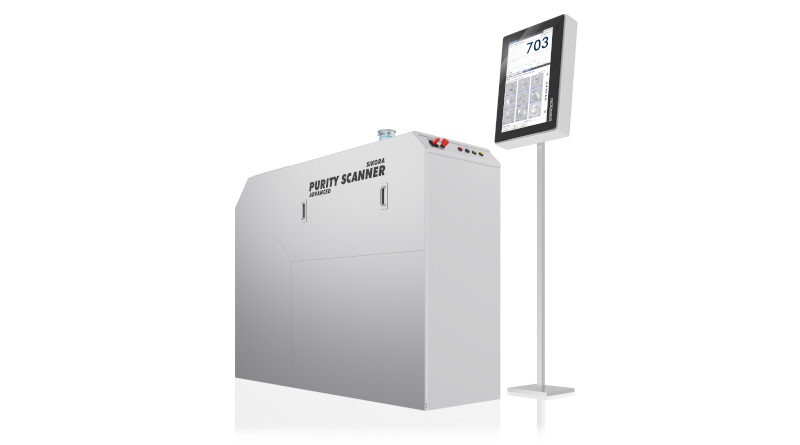Inline inspection and sorting
Sikora, Hall 10 – Booth F14
During the online quality control of plastic pellets, Sikora’s Purity Scanner Advanced ensures that only pure material enters the further production process. Even small, critical contamination is reliably detected and automatically sorted out, says Sikora. Both the detection and the ejection behaviour of contaminated pellets are perfectly coordinated. Thanks to the modular system design of the scanner, different camera types can be used depending on the material being inspected. In addition to optical cameras, which detect black specks and discolourations, an X-ray camera can be installed to detect metallic contamination. Many systems on the market have a maximum of 2 optical cameras.
According to Sikora, these quickly reach their limits due to a relatively low coverage as soon as the contamination are outside the field of view of the installed cameras. Therefore, the company offers its customers the possibility to have a third optical camera installed, if required. This camera setting offers a higher detection rate, so that more contamination can be detected. This is especially advantageous when the Purity Scanner Advanced is integrated directly into the production line as an inline system and multiple sorting with a typical 2-camera system is not possible. The Purity Scanner Advanced automatically sorts out the detected contamination via a blow-out unit. Thanks to the higher detection rate, more contaminants are sorted out with a 3-camera setting.
Against this background, the optimisation of the by-catch becomes more important. Therefore, Sikora has developed the feature of “hybrid blow-out”. The customer can define in advance which impurities in the material represent uncritical contaminations and select a smaller blow-out unit for these, so that their by-catch is reduced. These include, for example, small, light-coloured black specks that frequently occur in the material. On the other hand, a larger blow-out unit is specified for critical contaminants – for example, metal contaminants that can impair the functionality of the subsequent end product.

